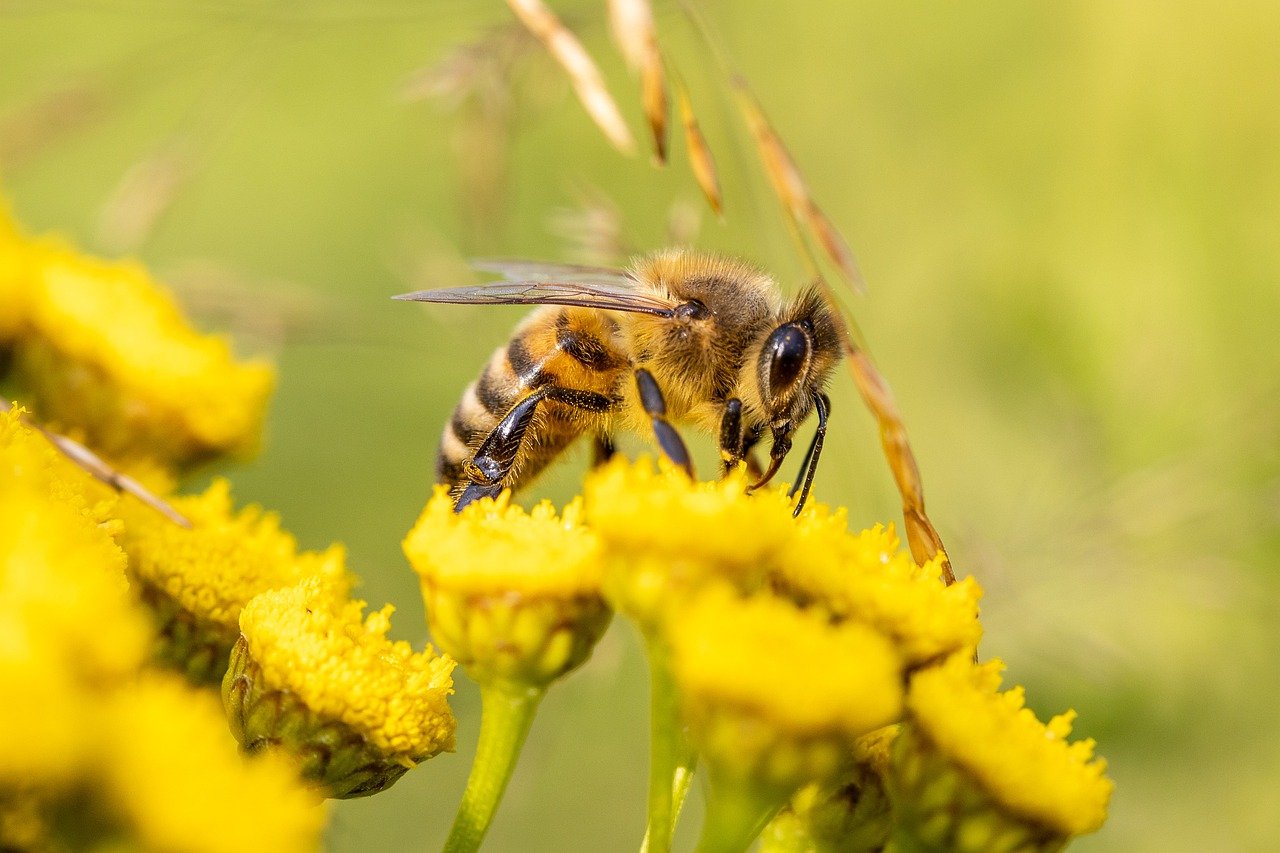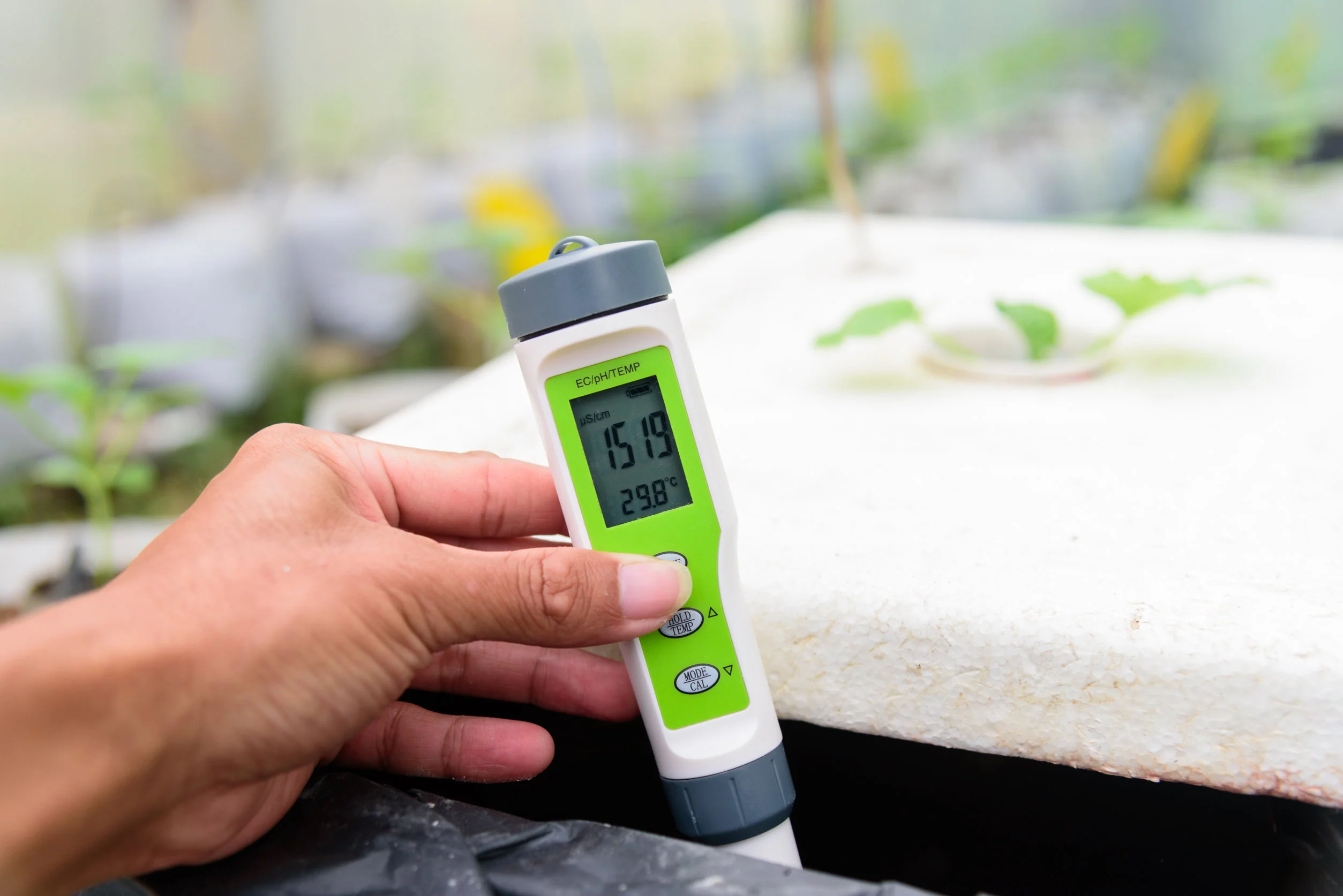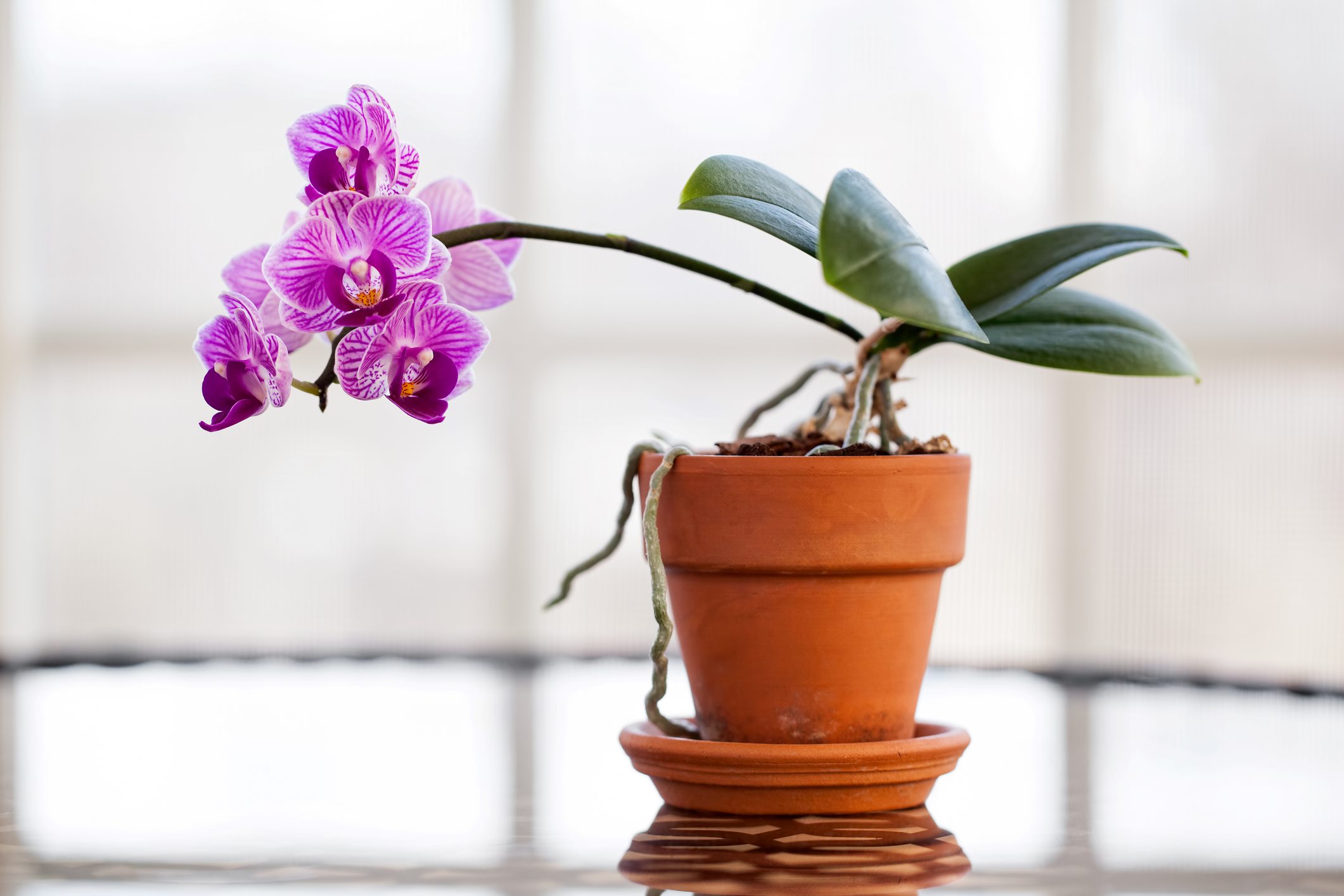Home>Gardening News and Trends>Why Flowers Are Important


Gardening News and Trends
Why Flowers Are Important
Modified: January 22, 2024
Discover the Latest News on Why Flowers Are Important. Find out the benefits and significance of flowers in various aspects of life, from enhancing mood to expressing emotions.
(Many of the links in this article redirect to a specific reviewed product. Your purchase of these products through affiliate links helps to generate commission for Chicagolandgardening.com, at no extra cost. Learn more)
Table of Contents
Introduction
Flowers have been an integral part of human society and culture for centuries. They possess a unique charm that captivates our senses and evokes a range of emotions within us. From their vibrant colors and enticing fragrances to their delicate petals and intricate designs, flowers have the ability to enhance the beauty of any environment.
Beyond their aesthetic appeal, flowers hold significant symbolic meanings. They have been used as expressions of love, gratitude, and condolences, serving as gifts for various occasions and milestones in our lives. The emotional impact of receiving flowers can be profound, lifting spirits, spreading joy, and providing comfort during difficult times.
Not only do flowers have profound effects on our emotions, but they also play a crucial role in the environment. As pollinators visit flowers, they aid in the reproduction of plants, contributing to the biodiversity of our planet. Additionally, flowers attract beneficial insects and birds, promoting a healthy ecosystem.
Flowers hold immense economic significance as well. The global floral industry generates billions of dollars each year, providing employment opportunities and supporting local economies. From florists and nurseries to flower farmers and distributors, the industry creates a ripple effect of economic growth.
It is not just the beauty and economic value of flowers that make them important, but also their impact on our health. Research has shown that being surrounded by flowers can reduce stress, improve mood, and enhance overall well-being. The therapeutic benefits of flowers have been recognized and embraced in various forms of alternative medicine.
Moreover, flowers have deep cultural and historical significance. They have been featured in art, literature, and religious ceremonies, representing love, purity, and spirituality. Different cultures have assigned specific meanings to various flowers, adding layers of symbolism and tradition to their significance.
In this article, we will explore the various reasons why flowers are important. From their aesthetic value and symbolic meanings to their emotional impact, environmental role, economic significance, health benefits, and cultural significance, we will delve into the multifaceted importance of flowers in our lives.
Aesthetic Value of Flowers
The aesthetic value of flowers is undeniable. Their vibrant colors, intricate shapes, and captivating fragrances have the power to mesmerize and delight our senses. Whether displayed in a bouquet, arranged in a vase, or sprinkled across a garden, flowers enhance the beauty of any space.
Each flower possesses its own unique beauty, with varying hues and patterns that add depth and interest to any floral arrangement. From the bold and vibrant petals of roses to the delicate and graceful blossoms of lilies, each flower evokes a different visual experience, creating a tapestry of colors and textures.
But it is not just the visual appeal of flowers that adds to their aesthetic value. The fragrance they emit is equally captivating. The sweet scent of roses, the calming aroma of lavender, or the invigorating aroma of jasmine can transport us to different emotional and sensory landscapes, creating a multisensory experience.
Flowers also have the ability to transform a space and create a welcoming ambiance. Whether used as centerpieces at special events or as decor in homes and offices, flowers infuse the environment with a sense of beauty, tranquility, and liveliness. They create a visually pleasing focal point, instantly elevating the atmosphere and creating a positive impact on those who interact with them.
Beyond their individual beauty, flowers also have the power to create breathtaking displays when arranged together. Floral arrangements are an art form in themselves, with skilled florists using their creativity and expertise to combine different colors, shapes, and sizes to create stunning compositions. From elaborate bouquets to simple yet elegant floral designs, these arrangements showcase the aesthetics of nature and the artistry of human hands.
In addition to their visual appeal, flowers have become a source of inspiration for various art forms. Artists throughout history have immortalized flowers in paintings, sculptures, and photography, capturing their beauty and preserving it for generations to come. From still-life compositions to abstract interpretations, these artistic creations pay homage to the aesthetic value of flowers.
In essence, the aesthetic value of flowers cannot be understated. They bring beauty, harmony, and joy to our surroundings, inspiring us with their colors, shapes, and fragrances. Whether enjoyed in a garden, adorning a wedding venue, or brightening up a living space, the presence of flowers adds a touch of enchantment to our lives.
Symbolic Meaning of Flowers
Flowers have long been associated with symbolic meanings, conveying messages and emotions that words alone cannot express. Throughout history, different cultures have assigned specific meanings to various flowers, creating a language of flowers known as floriography. Understanding the symbolic meanings of flowers adds depth and significance to the act of giving and receiving them.
For example, the red rose has become synonymous with love and romance. It represents deep affection, passion, and beauty. Similarly, the white lily symbolizes purity and innocence, making it a popular choice for weddings and other special occasions. The sunflower, with its bright and cheery appearance, is often seen as a symbol of happiness and vitality.
Beyond romantic love, flowers can also convey a range of emotions and sentiments. The daisy, with its simple and delicate appearance, is often associated with innocence and purity. The tulip, with its various colors, symbolizes different emotions such as love, friendship, and gratitude. The violet, with its tiny and unassuming blossoms, represents modesty and humility.
Moreover, the symbolic meanings of flowers can extend to different stages of life and milestones. The chrysanthemum, for instance, is often associated with funerals and is seen as a symbol of honor and remembrance in many cultures. The lotus flower, revered in Eastern religions, represents enlightenment and spiritual growth.
It is important to note that the symbolic meanings of flowers can vary across different cultures, and even within the same culture, interpretations may differ. For example, while red roses are universally associated with love, in some cultures, yellow roses symbolize friendship rather than romantic love.
In addition to individual flower meanings, the combination of different flowers in a bouquet can convey specific messages. For instance, a bouquet of mixed roses may represent a range of emotions, while a bouquet of white flowers can symbolize purity and harmony.
Understanding the symbolic meanings of flowers provides an additional layer of sentiment and intention when giving and receiving them. It allows for a deeper connection between the sender and the recipient, as the flowers convey a specific message or emotion that resonates with the occasion or relationship.
Whether it is expressing love, gratitude, sympathy, or celebration, the symbolic meanings of flowers add a meaningful touch to each floral gesture, allowing us to communicate through the beauty of nature.
Emotional Impact of Flowers
Flowers have a profound emotional impact on us, evoking a range of positive emotions and uplifting our spirits. Their beauty, fragrance, and vibrant colors have the power to touch our hearts and bring joy to our lives.
Receiving flowers can elicit feelings of happiness, surprise, and gratitude. Whether it’s a bouquet from a loved one or a thoughtful arrangement from a friend, the act of receiving flowers can brighten our day and make us feel special. The sight and scent of flowers can instantly uplift our mood, filling us with a sense of joy and appreciation.
Flowers also have the ability to express and communicate emotions that words alone may struggle to convey. When used to apologize, they can serve as a gesture of remorse and sincerity. When given as a token of love, they can express deep affection and admiration. Flowers can convey sympathy and support during times of loss and provide solace to those grieving.
The emotional impact of flowers is not limited to the recipient. The act of giving flowers also brings a sense of joy and fulfillment to the sender. It allows us to connect with others on an emotional level and show them that we care. The act of selecting and presenting flowers can be a meaningful and thoughtful gesture, strengthening our relationships and fostering a sense of connection.
Flowers have also been shown to have a calming and stress-reducing effect on our emotions. Studies have indicated that being in the presence of flowers can lower levels of anxiety and increase feelings of relaxation and tranquility. The visual beauty and soothing fragrance of flowers have a therapeutic effect on our well-being, providing a moment of respite from the demands of daily life.
Moreover, flowers have been used in various forms of therapy to improve mental and emotional well-being. Floral therapy, also known as flower essence therapy, harnesses the healing properties of flowers to support emotional balance and promote overall wellness. The practice involves using flower essences to address specific emotional concerns and offer support during challenging times.
It is clear that flowers have a significant emotional impact on our lives. Whether given or received, they have the power to uplift our spirits, express our emotions, and provide comfort during difficult times. The mere presence of flowers in our surroundings can create a positive and nurturing environment, fostering a sense of emotional well-being.
Environmental Importance of Flowers
Flowers play a vital role in our environment, contributing to the health and sustainability of ecosystems. Their presence benefits both plants and animals, making them an essential component of our natural world.
One of the primary roles of flowers is attracting pollinators such as bees, butterflies, and birds. Through a process known as pollination, these animals transfer pollen from the male part of a flower to the female part, enabling plants to reproduce. This reproductive process is crucial for the growth and diversity of plant species. Without pollinators, many plants would not be able to produce fruits, seeds, or new plants, leading to a decline in biodiversity and a negative ripple effect throughout the ecosystem.
Flowers have developed various strategies to attract specific pollinators. They utilize bright colors, unique petal shapes, and enticing scents to capture the attention of their target pollinators. By offering nectar as a reward, flowers provide a food source for pollinators, ensuring their visitation and increasing the chances of successful pollination.
In addition to attracting pollinators, flowers also support other beneficial insects. Many insects, such as ladybugs and lacewings, are natural predators of plant pests such as aphids and caterpillars. By providing them with nectar and pollen, flowers contribute to the population growth and activity of these beneficial insects, promoting natural pest control in gardens and agricultural landscapes.
The presence of flowers also enhances the overall biodiversity and stability of ecosystems. They provide habitat and food sources for a wide range of organisms, including insects, birds, and small mammals. The diversity of flower species supports a variety of life, forming intricate food webs and promoting a healthy balance within ecosystems.
Furthermore, flowers contribute to soil fertility and nutrient cycling. As flowers bloom and die, their organic matter decomposes, enriching the soil with essential nutrients. This organic matter improves soil structure, water retention, and nutrient availability, enhancing the overall health and productivity of plants in the area.
Conservation efforts aimed at protecting and preserving flowers have become increasingly important due to the loss of natural habitats and the decline in pollinator populations. Creating and maintaining flower-rich habitats, such as wildflower meadows and pollinator gardens, can provide vital resources for pollinators and contribute to their conservation.
Overall, the environmental importance of flowers cannot be understated. They are an integral part of our ecosystems, playing a crucial role in plant reproduction, supporting beneficial insects, enhancing biodiversity, and contributing to soil health. By recognizing and preserving the value of flowers, we can ensure the continued health and balance of our natural world.
Economic Significance of Flowers
Flowers hold a significant place in the global economy, generating billions of dollars each year and supporting various industries and livelihoods. The floral industry encompasses a wide range of activities, from flower cultivation and retail to floral design and distribution.
One of the primary contributors to the economic significance of flowers is the cut flower trade. Cut flowers are grown and harvested for the purpose of being sold as fresh flowers. This industry involves flower growers, wholesalers, exporters, and retailers. Flowers are transported and traded globally, allowing consumers around the world to enjoy and purchase a wide variety of blooms throughout the year.
The cut flower trade creates employment opportunities in flower-growing regions, especially in countries with favorable climates and suitable conditions for flower cultivation. It provides income for farmers and workers involved in planting, harvesting, packaging, and transporting flowers. In addition, the floral industry supports a network of florists, wedding planners, event decorators, and other professionals involved in the design and arrangement of flowers.
Flower cultivation also contributes to local economies through the purchase of materials and supplies necessary for growing and maintaining flowers. This includes land, equipment, tools, irrigation systems, fertilizers, and pesticides. The economic ripple effect extends to businesses that support the industry, such as transportation and logistics companies, packaging manufacturers, and wholesale markets.
Moreover, the floral industry has a significant impact on tourism and the hospitality sector. Flowers are used extensively in hotels, restaurants, and event venues to create appealing and welcoming environments. Flower festivals and floral exhibitions attract tourists and stimulate local economies, generating revenue from visitor spending.
The economic significance of flowers can also be observed in the gift and personal expression market. Flowers are a popular choice for gifting on various occasions such as birthdays, anniversaries, and Valentine’s Day. The demand for flowers during these periods leads to increased sales and revenues for florists and retailers.
Additinally, flowers are frequently used in corporate settings, contributing to the business gifting industry. Whether it’s expressing appreciation to clients or employees, floral arrangements are a common choice to convey sentiments of gratitude and goodwill. The demand for corporate floral services boosts the revenue of flower suppliers and florists who cater to these needs.
Overall, the economic significance of flowers is apparent in the various industries and sectors they impact. The global floral trade creates employment opportunities, supports local economies, stimulates tourism, and drives consumer spending. By recognizing the economic value of flowers, we can appreciate the contributions they make to our society and economy.
Health Benefits of Flowers
Flowers have more to offer than just visual beauty and fragrance; they also have numerous health benefits for our overall well-being. The presence of flowers in our surroundings can have a positive impact on our mental, emotional, and even physical health.
One of the most well-known health benefits of flowers is their ability to reduce stress and promote relaxation. Research has shown that being in the presence of flowers can lower cortisol levels and decrease feelings of anxiety and tension. The vibrant colors and pleasant scents of flowers have a soothing effect on our minds, helping to create a calm and peaceful atmosphere.
Flowers can also improve our mood and uplift our spirits. The sight of a beautiful bouquet or a vibrant garden can instantly boost our mood and create a sense of joy and happiness. Additionally, the fragrances emitted by flowers, such as lavender or jasmine, have been used in aromatherapy to elevate mood and reduce symptoms of depression.
Moreover, flowers have the power to enhance our cognitive abilities and improve our focus and productivity. Studies have shown that being in a floral-filled environment can improve concentration, memory retention, and overall cognitive function. Incorporating flowers into our work or study spaces can provide a natural and refreshing boost to our mental performance.
Flowers can also contribute to our physical health by improving indoor air quality. They naturally remove toxins from the air and release oxygen, creating a healthier and fresher environment. This can help reduce symptoms of allergies and respiratory conditions, improve sleep quality, and boost overall respiratory health.
Additionally, engaging with flowers through activities such as gardening or arranging floral displays can have therapeutic effects on our physical and mental well-being. Gardening has been shown to decrease stress levels, improve dexterity and strength, and increase overall physical activity. Arranging flowers allows for creative expression, providing a sense of accomplishment and relaxation.
Furthermore, flowers have been used in natural remedies and alternative medicine for their healing properties. Flower essences, made from the energetic imprint of flowers, are used to address emotional imbalances and support overall wellness. Bach flower remedies, for example, are used to promote emotional balance and alleviate anxiety and stress.
Incorporating flowers into our daily lives, whether through floral displays, gardening, or simply enjoying nature, can have a profound impact on our health and well-being. The therapeutic benefits of flowers extend beyond their visual appeal, providing us with a natural and holistic approach to nurturing our physical, mental, and emotional health.
Cultural and Historical Significance of Flowers
Flowers have held significant cultural and historical importance throughout human civilization. They have been woven into the tapestry of our lives, serving as symbols, expressions of love, and integral elements in art, literature, and religious ceremonies.
In many cultures, flowers carry symbolic meanings and are deeply ingrained in traditions and rituals. For example, in the Japanese culture, cherry blossoms (sakura) represent the transience of life and are celebrated during Hanami, the annual cherry blossom viewing festival. In Hinduism, the lotus flower symbolizes purity and divine beauty and holds great spiritual significance.
Flowers have also played a prominent role in expressing love and affection. The act of giving flowers as a token of love dates back centuries and has become deeply rooted in many cultures. Red roses, for instance, have long been associated with passionate love and are popular gifts on Valentine’s Day and anniversaries.
Furthermore, flowers have been immortalized in art and literature. From ancient times to the present day, artists, poets, and writers have drawn inspiration from the beauty of flowers. They have been depicted in paintings, sculptures, and poetry, capturing their delicate forms, vibrant colors, and poetic symbolism.
In religious and spiritual contexts, flowers hold profound significance. They are often used in ceremonies, rituals, and offerings, representing purity, divinity, and the cycle of life. Flowers adorn sacred spaces and altars, creating a visually stunning and spiritually uplifting atmosphere.
Flower festivals and events are held around the world, celebrating the cultural and historical significance of flowers. These festivals showcase the beauty of specific flower varieties and highlight their importance in local traditions and customs. The Flower Parade of the Netherlands and the Chelsea Flower Show in the United Kingdom are examples of such events.
Flower symbolism is also present in national and regional emblems. Many countries have designated specific flowers as national symbols, representing their unique identity and culture. The rose is the national flower of England, while the lotus is the national flower of India.
Moreover, the language of flowers, or floriography, was a popular practice in Victorian times. Specific meanings were associated with different types of flowers, allowing individuals to convey messages and emotions through floral arrangements. This communication through flowers added a layer of secrecy and romantic symbolism to interpersonal relationships.
The cultural and historical significance of flowers continues to be celebrated and cherished in modern society. Whether it’s through the observation of traditional customs, the appreciation of floral art, or the participation in flower festivals, flowers remain an integral part of our cultural heritage, connecting us to our past and enriching our present.
Conclusion
Flowers hold a multifaceted importance in our lives, encompassing their aesthetic value, symbolic meanings, emotional impact, environmental role, economic significance, health benefits, and cultural significance. They have the power to captivate our senses, uplift our spirits, and connect us to the beauty of the natural world.
From a purely aesthetic standpoint, flowers enhance the visual appeal of any environment. Their vibrant colors, intricate shapes, and alluring fragrances create a feast for our senses, bringing beauty and harmony to our surroundings.
Flowers also convey symbolic meanings, allowing us to express emotions, communicate messages, and add depth to our relationships. Each flower has its unique significance, and the combination of flowers in bouquets or floral arrangements further enhances their symbolism.
The emotional impact of flowers cannot be overstated. They have the ability to uplift our spirits, reduce stress, and bring joy to our lives. Whether given or received, flowers have the power to convey love, appreciation, sympathy, or celebration, creating a connection between the giver and the recipient.
Flowers play a vital role in the environment. They attract pollinators, support biodiversity, and contribute to the overall health and balance of ecosystems. Flowers serve as a source of food, habitat, and beauty for various organisms, making them crucial for the preservation of our natural world.
Moreover, flowers have significant economic implications. The floral industry generates substantial revenue and provides employment opportunities across the globe. From flower cultivation to retail and floral design, the industry supports local economies and stimulates tourism and consumer spending.
Beyond their visual appeal and economic value, flowers offer numerous health benefits. They have been shown to reduce stress, uplift mood, improve cognitive function, and contribute to overall well-being. From their calming effects to their ability to purify the air, flowers have a positive impact on our mental, emotional, and physical health.
Lastly, flowers hold deep cultural and historical significance. They are an integral part of our traditions, art, literature, and religious practices. Flowers are celebrated in festivals, used in ceremonies, and embraced as national symbols, connecting us to our cultural heritage and enriching our lives.
In conclusion, flowers have a remarkable impact on our lives in various ways. They bring beauty, meaning, and emotional well-being. They support our environment and economies, offering therapeutic benefits, and connecting us to our cultural roots. The importance of flowers goes far beyond their superficial appearance, making them an integral part of the human experience.








